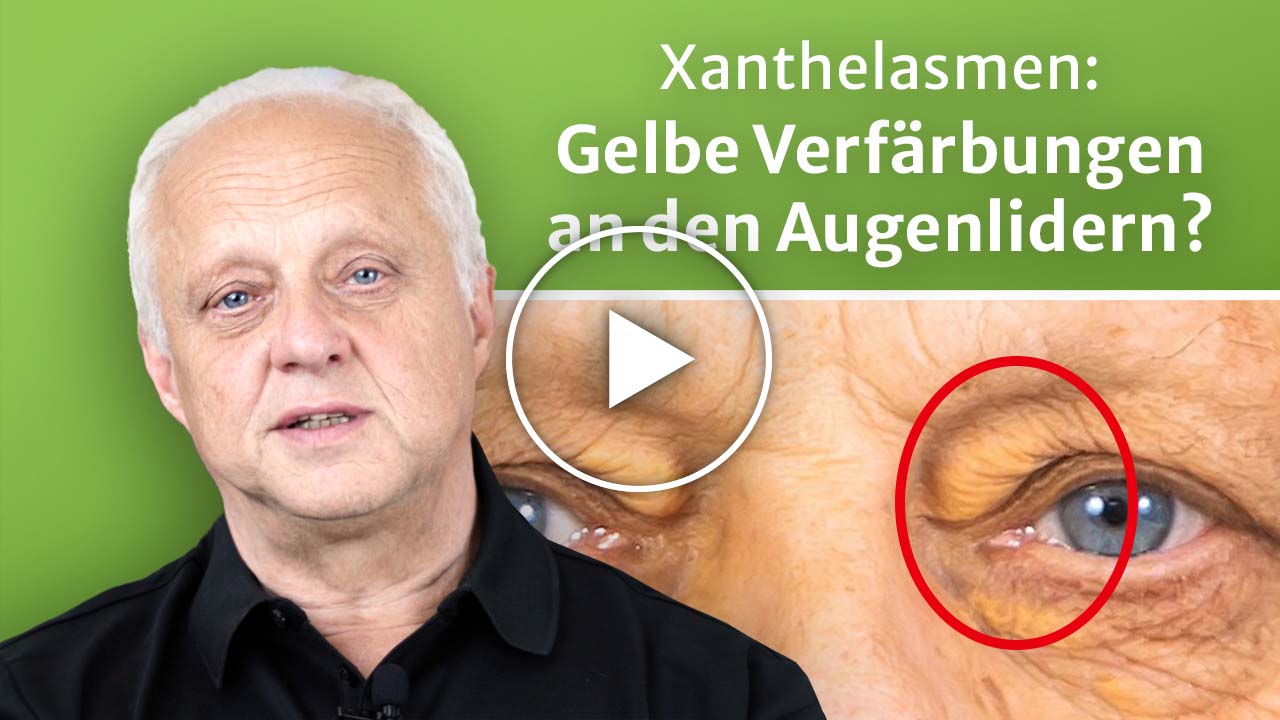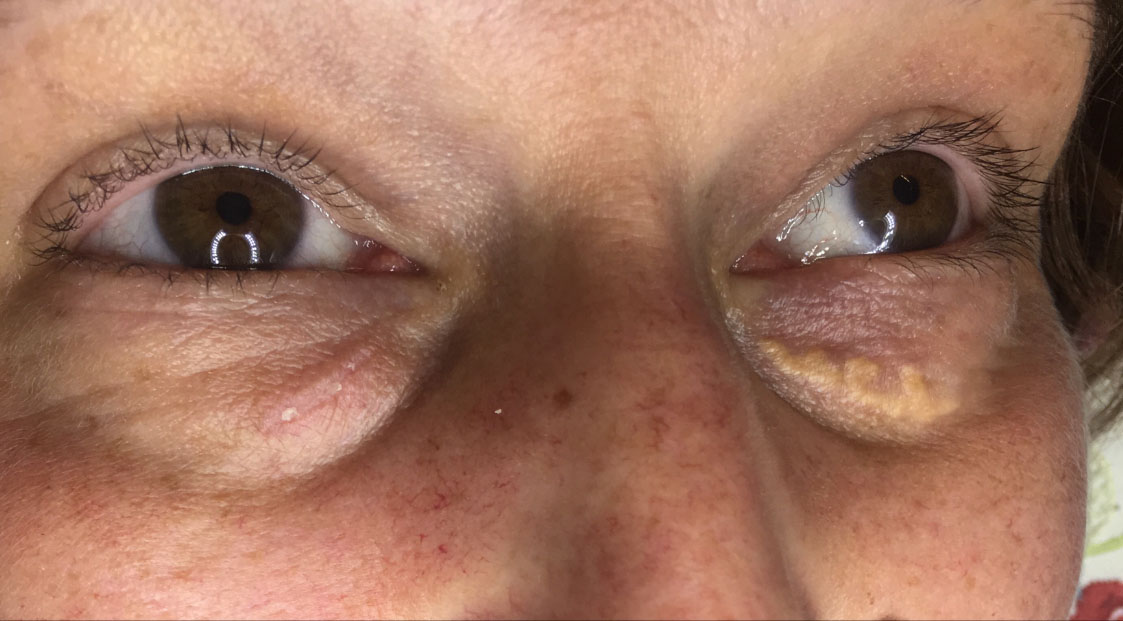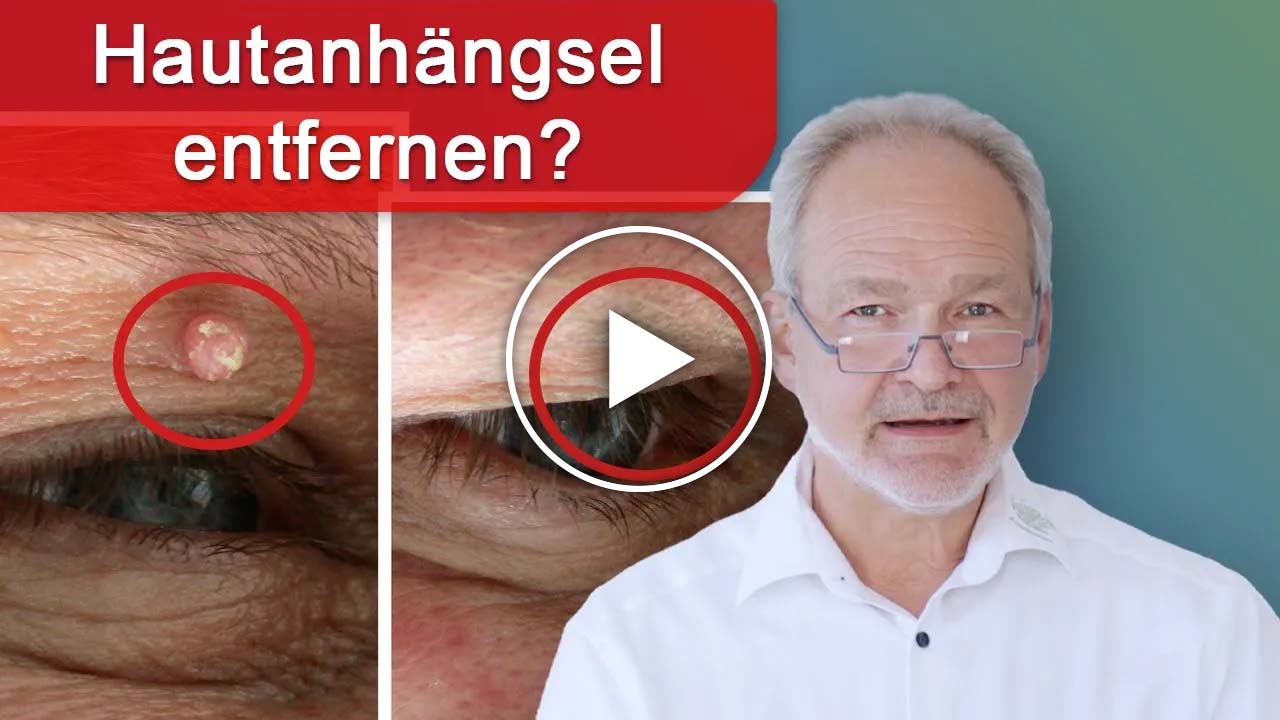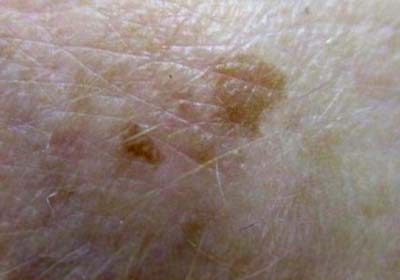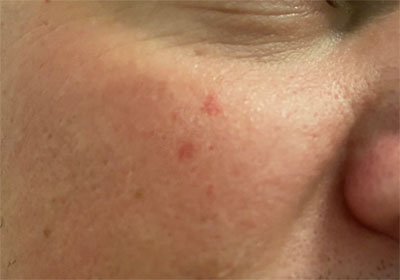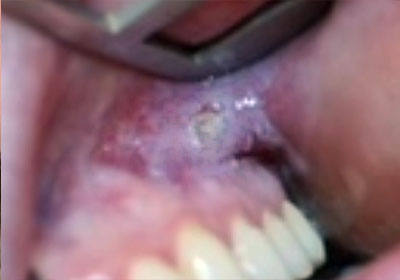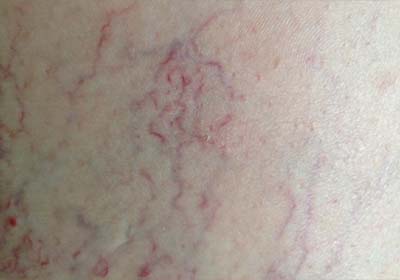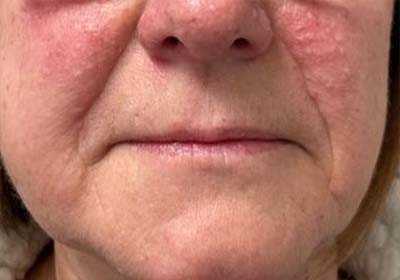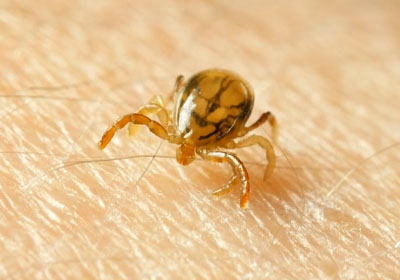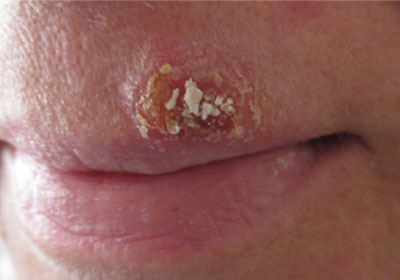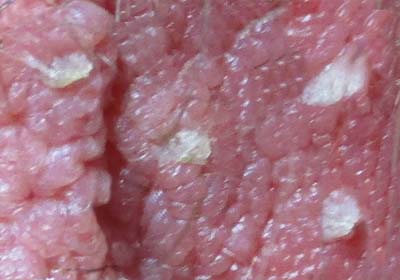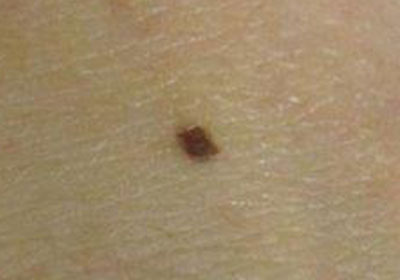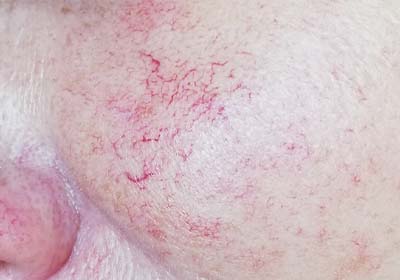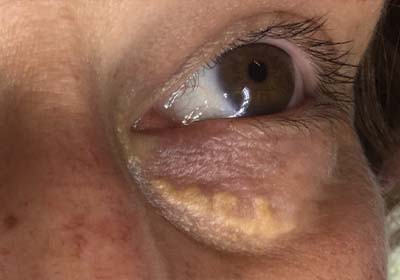xanthelasma
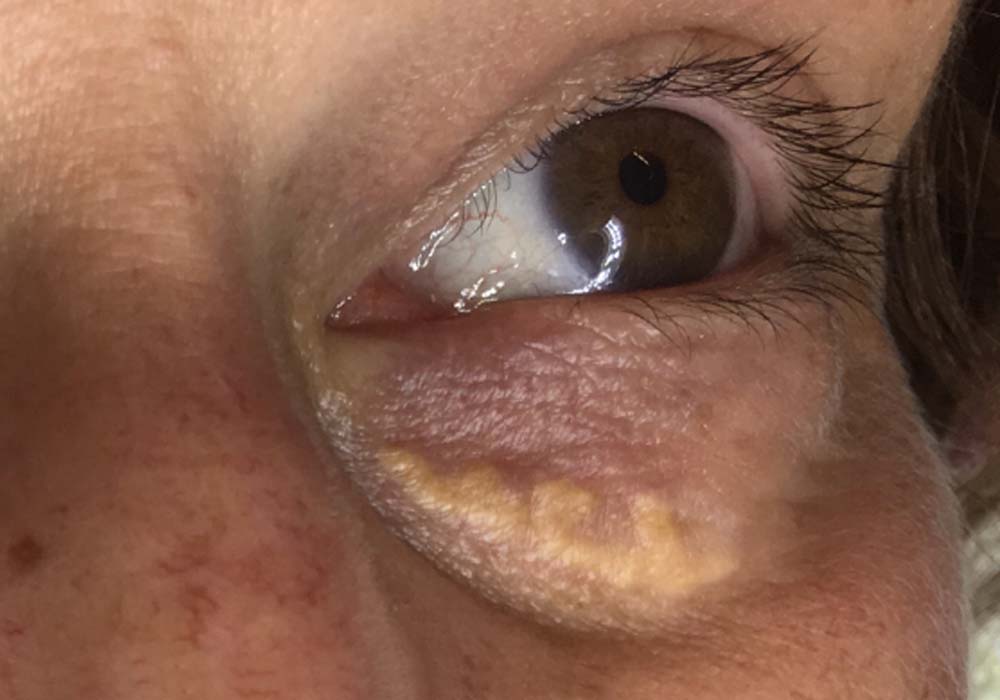
Image from ongoing user study
A patient case with xanthelasma, treatment with phlebolysis
In this short video, a patient explains his experience with phlebolysis for xanthelasma. Woman dr Tarane Probst supplements the patient case from a medical point of view.
The decision to undergo phlebolysis was primarily due to the high tendency to scar formation - which represents a relevant risk with alternative procedures. This risk is almost non-existent with phlebolysis.

"If there is a tendency to scarring, it is certainly an advantage to choose a procedure that does not focus on scarring. Xanthelasma occur on the eye, which means that many other treatments and their aftercare can be very disruptive - for example a bandage, creams or severe redness.
After a phlebolysis, the therapy progresses over the next few weeks. You don't have to do anything, don't apply lotion and usually don't need a follow-up consultation.
The sclerosing of the blood vessels leads to the immune system breaking down the affected cells – this is a completely natural process, for example when a bruise is broken down or wounds heal.”
dr medical Tarané Probst, explaining the above patient case
Female medical specialist for gynaecology and obstetric
Xanthelasma are yellow deposits that are often found on the upper and lower eyelids. These are harmless skin changes that are usually perceived as cosmetically disturbing. Xanthelasma is caused by excess fat stored under the skin's surface. In most cases, they occur without an identifiable cause, but there are some conditions that are more common in patients with xanthelasma.
These diseases include disorders of liver metabolism, problems with the pancreas, high blood sugar levels, disorders of lipid metabolism and diabetes mellitus. Lipid metabolism disorders with elevated cholesterol levels are most common in patients with xanthelasma. However, those affected can also be affected by the yellowish skin changes without increased blood lipid levels.
Xanthelasma can be treated minimally invasively and comfortably with phlebolysis. The excess fat cells that are stored under the skin's surface are boiled away through the targeted application of radio frequency and electrolysis without damaging the basic cells. This treatment can be carried out without anesthesia as it is usually somewhat uncomfortable but not painful.
Unlike traditional methods such as laser treatment, electrical or cold removal, and acid treatment, radio wave therapy does not cause burns, blisters, or scars. It can be used on any skin, is painless and there is no risk of infection. Threads or bandages are also not required after the treatment.
Overall, xanthelasma is a harmless skin change that can be perceived as cosmetically disturbing. It is important to remove possible metabolic disorders that causally led to the skin disorder in order to prevent xanthelasma from recurring. Phlebolysis offers a gentle and painless treatment method that achieves good results for many patients.
In the picture on the left you can see recently treated xanthelasma and the comparison to the untreated one on your right. Image from ongoing user study.
Video posts on phlebolysis:
In this post dr medical Dirk Wiechert, general practitioner from Bremen, 3 cases before. Including notable patient caseswho suffered from fibroids in sensitive areas.
Andreas Oehme, co-developer of phlebolysis, explains how the process works this interview.

